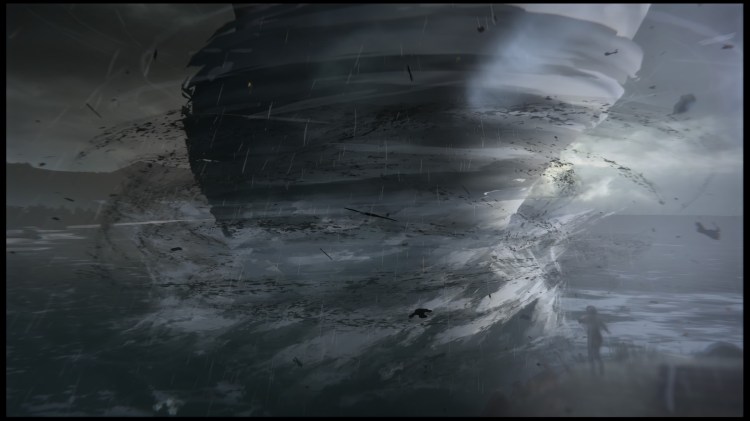Check out our Reviews Vault for past game reviews.
“Chrysalis” is a hard experience to describe, but I’m pretty sure I liked it. I think.
This first episode in developer Dontnod Entertainment’s five-part adventure game, Life Is Strange, is out Friday for PlayStation 4, Xbox One, and PC. It’s the story of Maxine, a sad and isolated girl at a prestigious academy who discovers one day that she can rewind time. As she explores her newfound ability, she navigates social cliques, tries to keep her head down, and has visions of an apocalyptic event that threatens to destroy an entire town and everyone in it.
So just basic high school stuff, really.
It’s hard to gauge where any of this is going, but so far, Life Is Strange has some interesting characters, intriguing plot hooks, and a core mechanic that injects some novelty and flexibility into the lately crowded adventure/choice-based game market.
I mean, sometimes its art is ugly as hell, but it has a really good personality.

Above: Plus all of the casual pop-culture references you care to eat.
What you’ll like
Max’s head is a strange and interesting place to hang out
Typically when we hear the internal monologue of a main character in a game or movie, we get the cynical musings of a hard-bitten detective or the confused ramblings of a wannabe pirate/mayoral trophy husband. But Max is a high school senior and an introvert, so her thoughts are often silly, anxious, or all-out heartbreaking. It’s interesting to get into the head of a character who is insecure about herself and others and gets excited about little things like having her own room. And sometimes she’ll do something like drop a random and ridiculous The Lord of the Rings reference, and you won’t even know what to do with that.
It’s a great perspective that you just don’t often see, and it gave me even more incentive to explore this world because I was always interested in what Max would have to say about people. And it’s one of the few times in an adventure game that I’ve felt like I was hearing a character’s real thoughts instead of serving as an unseen audience they were performing for. And that’s a really cool way to interact with a game.

Above: This is how Max sees herself. I know because she told me.
The time-rewind mechanic helps minimize second-guessing
When you start up Life Is Strange, it will give you the usual warning about the importance of your choices and their long-lasting effects. And, like in similar games like The Walking Dead, this puts a lot of pressure on you and can lead to paralysis as you try to figure out which option might be less wrong than the other.
Luckily, Max can turn back time, which also means that you can erase mistakes and get a preview of how your choices will play out. If Max breaks something or leaves evidence of snooping, you can undo those blunders, and she’ll still remember anything she learned. And if you make one decision, and something short-term happens that you don’t like, you can rewind, take the other path, and then either stick with that or go back again and continue with your first choice.
Time-jiggery also helps you make seemingly inconsequential decisions like whether or not you’ll warn one character that she’s about to get biffed in the head with a football, and it’s an important part of solving puzzles. Timing is important, and if you fail at a solution, the game will show you where you need to focus your attention before you go back and try again. It’s pretty basic at this point, and hopefully later chapters will introduce some more complications and interesting uses, but what’s there looks really promising.

Above: This bucket is important.
Minor acts and choices seem important
This bit has a downside that I’ll get to later, but Life Is Strange makes sure you know when you do something that might come back later, even when it seems like the most random and insignificant activity. For example, it told me that watering Max’s plant would have consequences, and while I’m sure that the plant will remember that, I don’t know if I’ll feel these effects as part of the plot or if I’ll just come back to the dorm room later on and see that my leafy companion has passed on.
It’ll be cool to see how some of these things play out, but more generally, it feels like it’s saying on some level that inconsequential decisions don’t exist and that every act, no matter how small, sends ripples through the universe that may lead to effects we will never notice. And then I started thinking about how that relates to my real life, and I found I couldn’t convince myself to get off of the couch in case doing so would set off an irreversible series of events and create a devastating hurricane in six months.
But then I just got up because I was kinda hungry.
I hope that this theme and these events continue through the rest of the game, and it’ll be extra great if I can trace anything that happens back to that time that I erased a whiteboard about halfway through this episode. But even if it doesn’t, it’s made me think outside of the game, and that in itself is a pretty good bonus.

